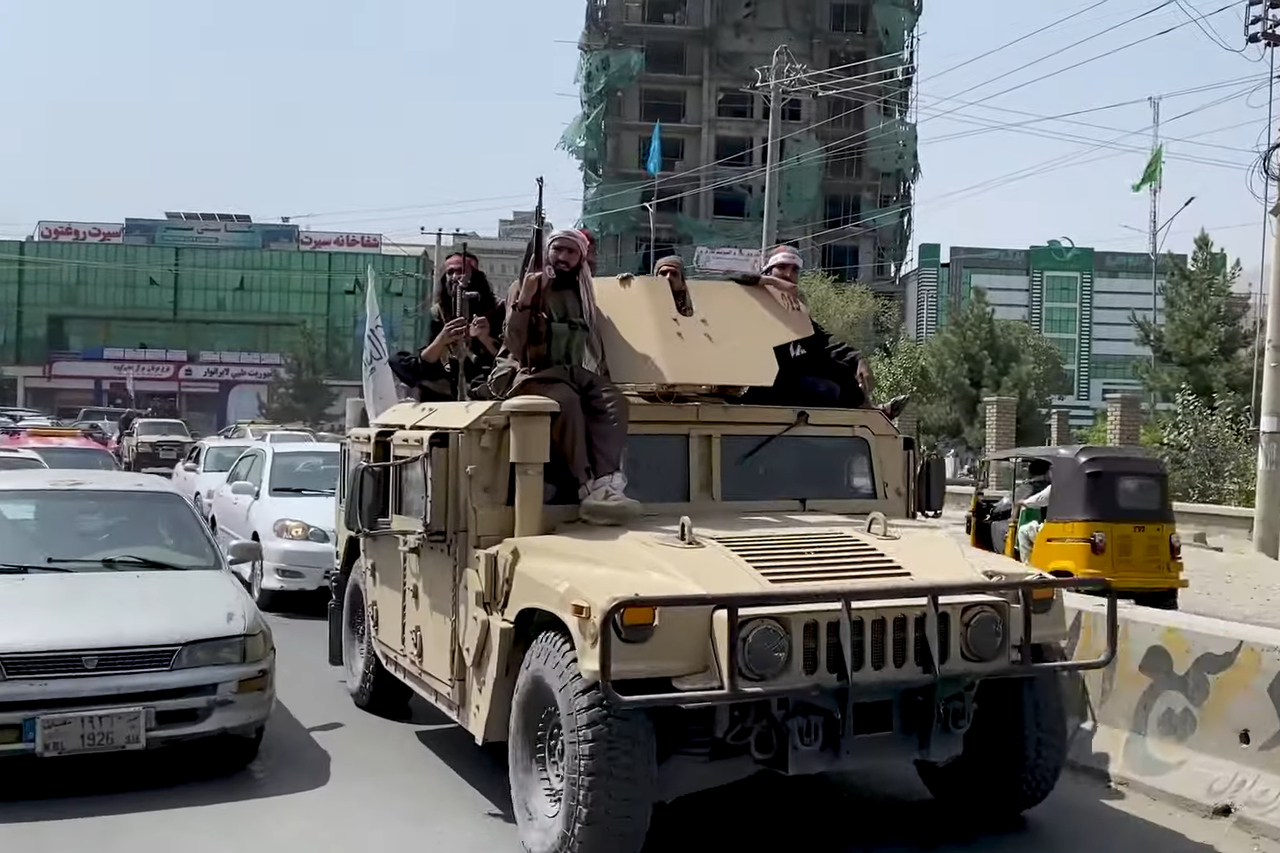The situation is tense at the Afghanistan-Pakistan border after the Taliban launched an attack along seven points of Pakistan’s border on 11 October. Pakistani Defence Minister Khawaja Asif said on Monday that there are no ties between the two countries following the attack and that the situation was hostile on the border. The Taliban and Pakistan have repeatedly exchanged fire since the Taliban took over Afghanistan in 2021. This border exchange is something different, and its cause has been simmering since before the Taliban took over. This is the largest operation that the Taliban has conducted since it took over the country.
This weekend, the Pakistani military claimed that it killed over 200 Taliban fighters. In contrast, the Taliban claimed that they killed 58 Pakistani troops and captured a further 25 from army posts along the border. According to reports, the Pakistani Air Force bombed a Taliban military facility in the Spin Boldak district of Kandahar province.
The Taliban’s attack comes after a bombing in Kabul on 9 October as the Taliban Foreign Minister Amir Khan Muttaqi started his week of walks with India to discuss diplomatic, trade and economic ties. There are reports that the explosion targeted a Toyota Land Cruiser in the area of Abdul Haq Square around 9:50 pm local time. At the time, Taliban spokesperson Zabeehullah Mujahid stated that all was well and that the Taliban were investigating. Mujahid accused a faction within Pakistan’s military of plotting against the Taliban regime.
Since then, the Taliban have claimed that a Pakistani air strike caused the explosion. If true, the question arises as to what target was suspected to be in the Toyota Land Cruiser to prompt such a strike? No details have emerged from Afghanistan surrounding the explosion since. There was speculation that it may have been the leader of Tehrik-e-Taliban Pakistan (TTP), Noor Wali Mehsud, but it is believed that he is safe in Afghanistan. Radio Free Europe reports that two senior TTP members were killed, but there is no other attribution found.
Tensions have been increasing as attacks in Pakistan have increased from militant groups now based in Afghanistan. Groups hostile to Pakistan, such as the TTP and the Balochistan Liberation Army (BLA), have taken up headquarters in Afghanistan.
Terrorist Proxy Backlash
The reality is that Pakistani terrorist groups have been operating in Afghanistan during NATO’s International Security Assistance Force (ISAF) deployment.
Pakistani groups have propped up the Taliban movement during the ISAF deployment. It was widely known that Taliban leadership was in Quetta, Pakistan and was widely referred to as the Quetta Shura. Being hosted by Pakistan and aided by various militant groups means that there is a quid pro quo. It is the backlash of Pakistan’s ISI policy of supporting the Taliban and these proxy groups. Now, the less savoury groups are in Afghanistan with the Taliban providing a haven for them as they offered their services and support with their efforts against NATO’s ISAF deployment.
The Pakistani state, through Inter-Services Intelligence, helped fund and relocate groups such as Lashkar-e-Taiba (LeT) and Jaish-e-Mohammed (JeM), which had been operating in the eastern provinces of Afghanistan for some time. These groups have been used as proxy groups against India in its occupied territory of Kashmir for decades. LeT rebranded itself as The Resistance Front and was responsible for the recent Pahalgam attack earlier this year, which caused India to conduct Operation Sindoor against Pakistan.
This policy allowed for those groups not to be directly within Pakistani borders, and therefore, the Pakistani state could have political distance from them when India would accuse Pakistan of harbouring terrorists and providing a safe haven to training grounds etc. This policy has really proven to be the Good, the Bad, and the Ugly for Pakistan now. The good was that Pakistan was able to have that distance and these aligned groups were able to set up camps and grow. The bad is that other groups like the TTP and the BLA, who are not aligned with Pakistan, were also able to set up within Afghanistan under the Taliban’s hospitality. The ugly is that now Pakistan has to deal with an emboldened TTP, BLA and the possibility of a divergent JeM and NRF (LeT), among other groups.
The Afghan Taliban and the TTP were also allies, with the TTP operating primarily out of Pakistan’s Federally Administered Tribal areas in 2007 and on. There are rumours that the TTP supported the Taliban’s attacks on Pakistan this weekend. But at the moment, it is no more than mere conjecture.
Now, Afghanistan is home to other groups such as TTP and the BLA and ISIS-Khorasan chapter (ISIS-K) and a myriad of different groups, including the Tehreek-e-Taliban Tajikistan. Last year, ISIS-K made headlines by utilizing its Tajik members to attack Russia.
Last week, eight people, including five soldiers, were killed in the Balochistan region of Pakistan by the Baloch Liberation Army. Earlier this month, Balochistan Chief Minister Sarfraz Bugti stated that the BLF is receiving “state patronage” from the Taliban. Afghanistan has been a haven for the TTP and the BLA for some time now. Bugti stated this as he also faced questions at a press conference regarding the suspension of the 4G network in the region. One recent example of BLA fighters crossing into Pakistan occurred in August 2025, when Pakistan killed 33 fighters who were crossing from Afghanistan province into the Zhob district of Balochistan. On 30 September, a bomb exploded outside the Quetta Frontier Headquarters, killing 10 and injuring a further 32.
TTP attacks have also increased in recent months. Violence in the Khyber Pakhtunkhwa province has been growing since 2021. In 2024, militant attacks increased by 70 percent 2024 compared to 2023. 2024 also marked the highest fatalities in a decade, when the TTP last had a significant resurgence against the Pakistani state.
Going Forward
The Taliban have been asserting themselves regionally with border skirmishes with Iran and Pakistan over the years. However, the increase in terrorist attacks in Pakistan will mean increased tensions with the Taliban regime — more attacks, more friction with the Taliban’s hospitality, more border skirmishes between the two countries.
It is incredibly doubtful that Pakistan will lead a significant territorial incursion in Afghanistan. To stave off attacks, the Pakistani state will increase its border security and military presence. But at what cost to its border security and the army presence along the disputed borders of Kashmir and Jammu? This is why Pakistan blames the Indian intelligence agency, Research and Analysis Wing (RAW), for supporting both the TTP and the BLA. It is the same proxy tactic that they used on India for decades.
The issue being though, this was not of Indian design but of a Pakistani policy of supporting terrorist and militant groups. One cannot put them all into Afghanistan and hope that only aligned groups will keep everyone else in check. Pakistan’s ISI cannot ask previously aligned groups such as the NFR (LeT) or JeM, because these groups are also enjoying the hospitality and recruitment pool of a Taliban-ruled Afghanistan.
Featured Photo: “Taliban on Humvee in Kabul, c. 2021” – Voice of America, Wikimedia Commons, 2025


